Theme Park Insider typically focuses on the major theme parks around the world owned and operated by the biggest players in the industry. However, while they don’t generate as much revenue as theme parks, waterparks are becoming a larger part of companies' portfolios. Most waterparks exist to supplement nearby theme parks as a way to increase the length of a stay, and typically carry minimal theming compared to the sibling theme park. Some waterparks may be inside and included in the admission of a theme park, while others are located directly adjacent or on nearby property as a separately ticketed gate. Around the country you may also find regional/local waterparks that aren’t associated with any nearby theme park, which is what we found in New Braunfels, Texas.
Schlitterbahn is one of the oldest waterparks operating today, and now falls under the management of Cedar Fair, which was convenient for us since we have Cedar Fair Platinum passes that allow for unlimited admission to all of the chain’s properties. The name Schlitterbahn comes from the Germanic culture of the New Braunfels region and means "slippery road," and there are subtle cues to that Bavarian heritage throughout the park. Over the past 4 decades, the park has steadily grown to where it now consists of two separate properties (East and West) that are connected via shuttle bus. Schlitterbahn has free parking, so it’s easy to just hop in your car to go between the two properties. However, there are headliner attractions in both parks, so if you want to avoid long lines, it’s best to park at the property where you want to start your day – something we didn’t consider on our first day when we parked at the West property and immediately took the shuttle bus to the East, facing nearly one-hour line for Master Blaster because we missed the rope drop on the East side. Schlitterbahn is very different from any other waterpark we’ve ever visited, and as a result, we ended up visiting a second day (also partially because our first day was cut short by thunderstorms that closed the park early).
Water coasters are becoming increasingly popular at waterparks around the country. Schlitterbahn is responsible for developing the technology behind the attractions, which was developed when the company was working on an attraction to simulate surfing, eventually becoming what is marketed as the "Flow Rider." The same water jets and laminar flow found on Flow Rider attractions are used to propel toboggan-style rafts uphill to allow for longer, more thrilling slides. Schlitterbahn actually has two water coasters, Master Blaster and Dragon’s Revenge, which are located on opposite ends of the East side.
Master Blaster sits atop a massive tower complex called "Blastenhoff."
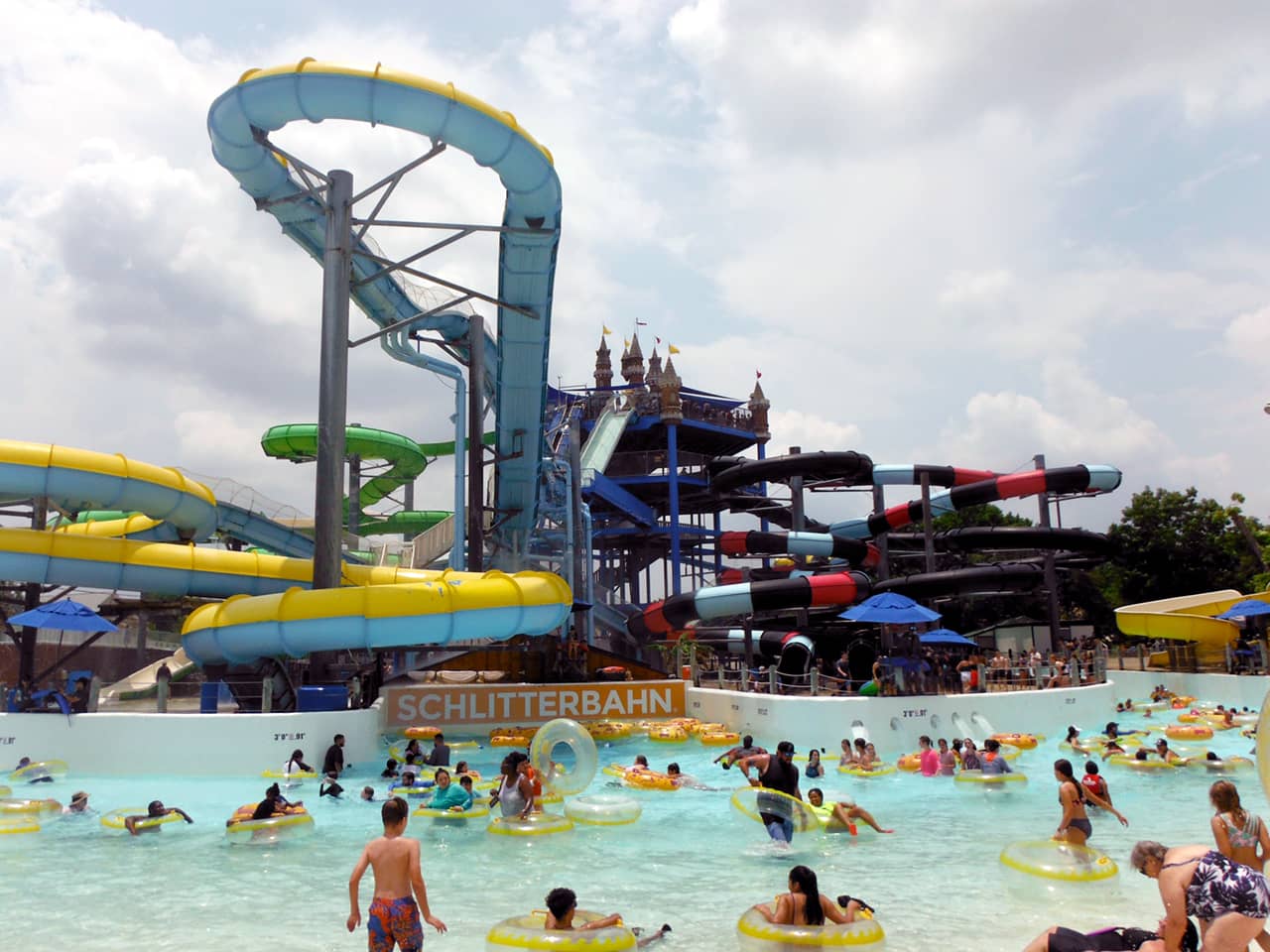
Master Blaster and Wolfpack, a family raft slide, sit atop the tower, while Black Knight, a smaller pair of tube slides, starts one level below.
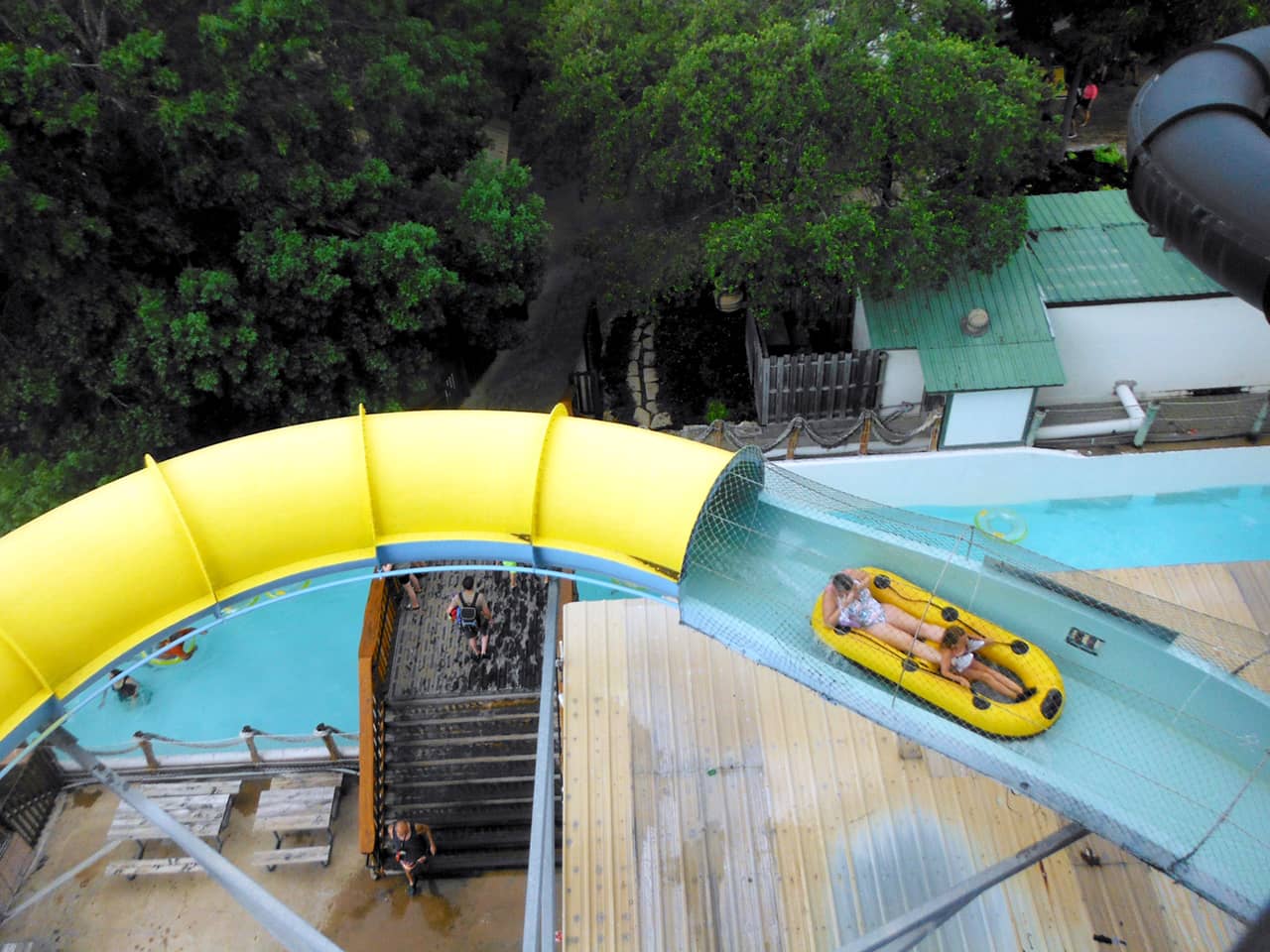
The lines for all of these slides are massive, and snake down and around the different platforms of the tower. Because of the lines, we ended up only riding Master Blaster (almost a full hour wait). The water coaster is one of the best we’ve been on (up there with Krakatau at Volcano Bay).
The one thing we did notice is that when we returned to the area later in the day and attempted to get in line for Black Knight, when the park shuts down operations for thunderstorms/lightning, they clear the tower. This means that everyone standing in line loses their spot regardless of how long you’ve been waiting. It’s a pretty crummy policy given that guests could potentially have been waiting in line for over 3 hours (we saw signs near the bottom of the tower indicating “approximately 4-hour wait from this point”) and finally get to the top only to have a clap of thunder cause the attractions to shut down.
Around the outside of the Blastenhoff tower is a tube-based attraction called The Torrent.
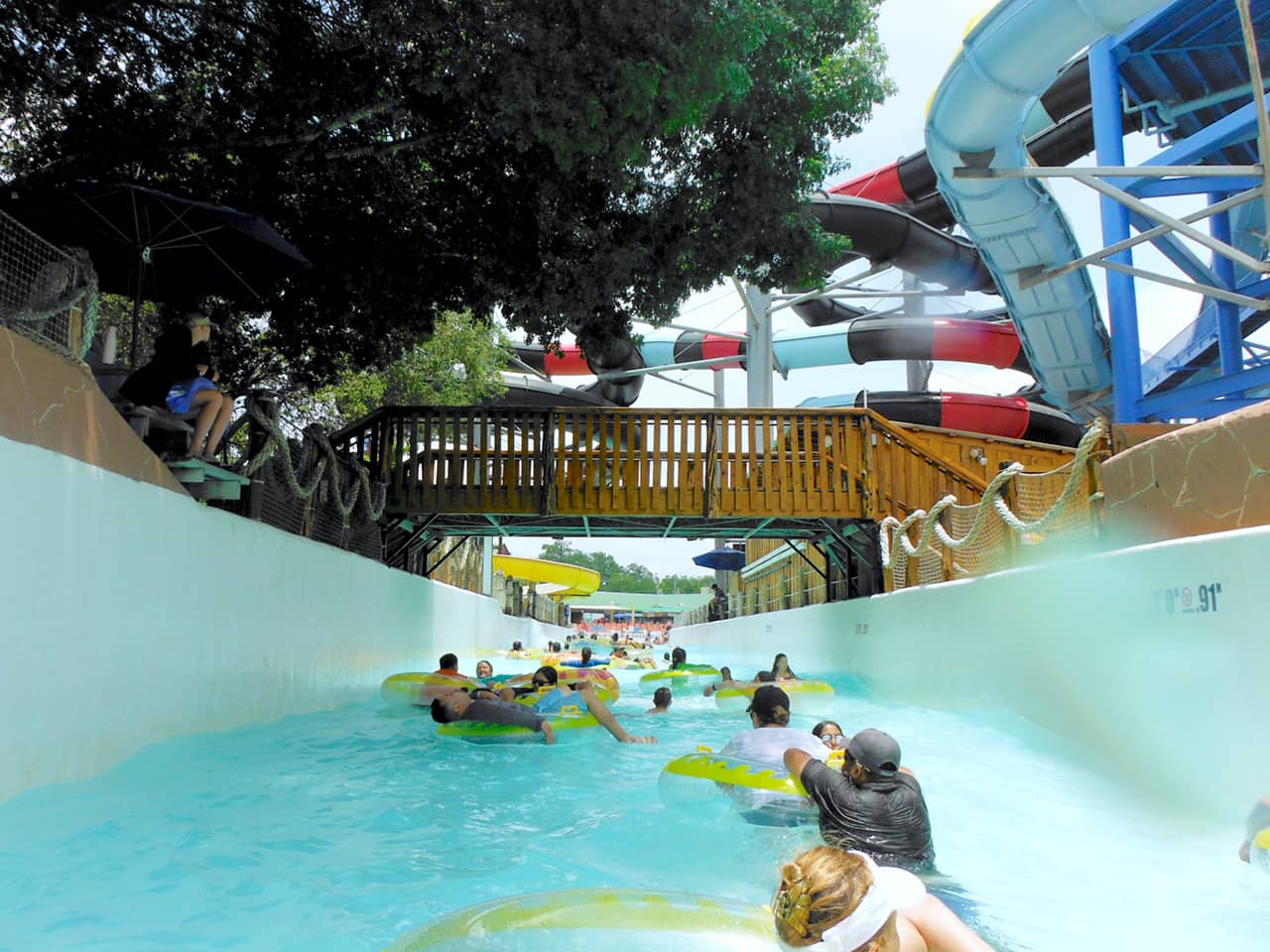
At first glance this looks like a lazy river, but about 100 yards into your journey down the watery canal there is a wave machine that sends massive surges of water down the trench. It’s similar to TeAwa: The Fearless River at Volcano Bay, but instead of guests riding the waves and high speed currents in life jackets, you grab a tube. The Torrent is a lot of fun, and it’s neat just to watch the waves power their way around 2 turns and into the wading pool that returns guests and their tubes back to the entrance. I’ve always enjoyed “fast lazy rivers” more than the typical lazy river attractions, and The Torrent was right up my alley.
On the opposite end of the East side of Schlitterbahn from Blastenhoff is the park’s other water coaster, Dragon’s Revenge.
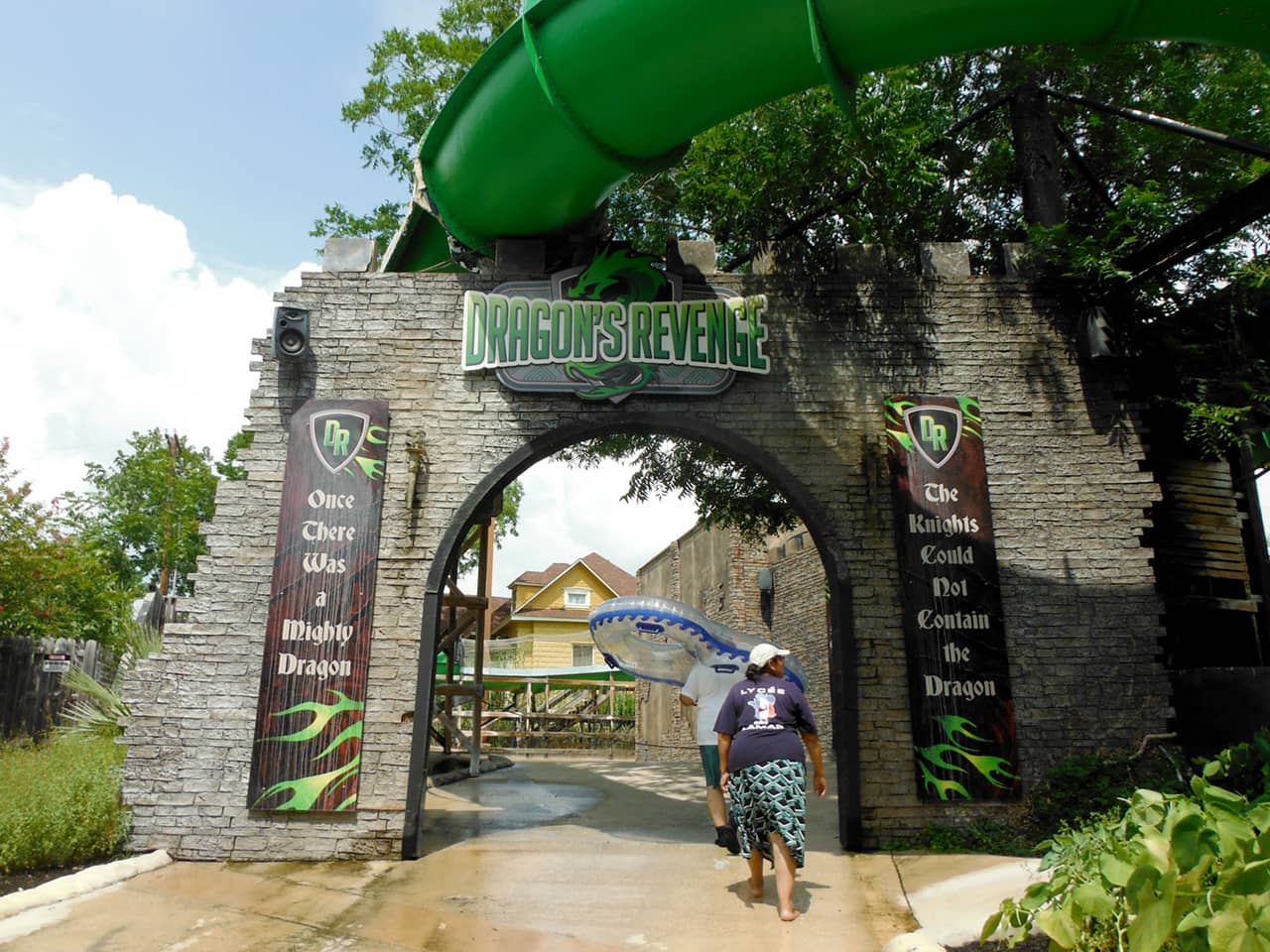
This water coaster is very different from Master Blaster in that there aren’t as many big hills, and the slide spends much of the first part taking guests in their toboggan-style rafts to the top using the same types of jets used on other water coasters. However, for what Dragon’s Revenge lacks in thrill compared to Master Blaster, it makes up for in theming. The entire slide is themed around a Medieval style castle where guests come face to face with a terrifying dragon. Unfortunately, the projection effects on the last indoor section of the attraction were not working, but overall I was impressed what designers were able to do on a water coaster. I have yet to experience a water coaster that has been remotely as well themed as Dragon’s Revenge.
Elsewhere on the East side of Schlitterbahn, there is a traditional lazy river (Krystal River), wading pool (Krystal Cove), and splash pad (Kiddie Coast). There’s also Boogie Bahn, which is the park’s “flow rider” attraction. This is a surfing simulator, though guests are not allowed to fully stand up on their boards (you must keep at least on knee in contact with the board) and looks quite simple. You grab a board and lay face down at the top of a slide. When the attraction is clear, the lifeguard opens the gate, and you slide into the wave shaped area on your board. Gravity and momentum carry you down to the bottom where powerful jets of water push you backwards. Then it’s up to the rider to balance and manipulate their body and board to remain on the edge of the hump that simulates a perpetually breaking wave. For seasoned surfers, this is probably a snap, but for an uncoordinated oaf like me, it’s challenging. I probably could have gotten the hang of it after a couple of tries, but one embarrassing wipeout in front of a bunch of seasoned pros was enough for me. The speed of the line can be tough to estimate since the length of time it takes each guest to ride is completely based upon their skill. Some guests were so good that they had to be told by the lifeguards to exit, while others were on and off in a matter of seconds because they couldn’t figure it out before being pushed into the washout zones.
The other main attraction on the East side of Schlitterbahn is Tubenbach. This tube-based attraction is similar to the many of the other tube-based attractions found on the West side of Schlitterbahn. Guests grab an innertube at one of the numerous entry points. From there it’s a combination of lazy river and roaring rapids as you are at the mercy of the currents. Along the way there are lifeguards to help control the flow of tubes through the faster and more narrow portions of the river, but there are some places where vortexes form forcing guests to paddle themselves out of a never-ending loop. Generally, the areas with faster moving water and rapids are padded, but some of the stretches can be a bit perilous if you’re used to traditional lazy rivers and/or raft-based water slides. There is also a stretch of Tubenbach where guests ride a giant conveyor belt (in their rafts) to get back to the highest elevation of the river.
Many of the attractions on the West side (original section) of Schlitterbahn are very similar to Tubenbach. These tube-based attractions (Raging River, Hillside, Whitewater, and Cliffhanger) are all very similar with varying sections of slow and fast moving rivers.
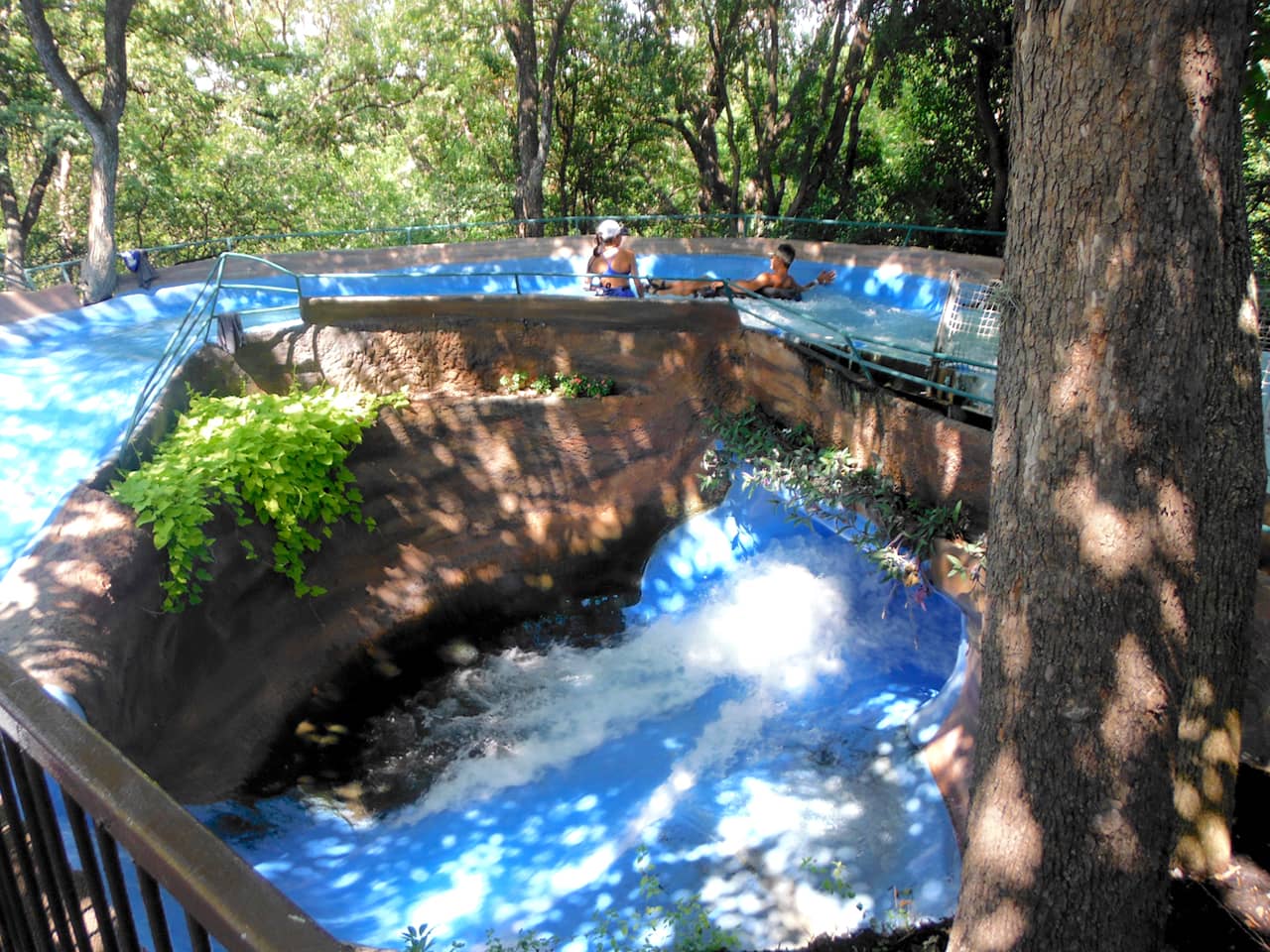
Raging River is billed as the longest water-based attraction in the world at over 3,600 feet long, taking over 30 minutes to complete, though the end of the attraction was closed during our visit meaning the finale into the Comal River was truncated from our experience. The various attractions crisscross the West side of Schlitterbahn and even go through buildings and under walkways and other attractions. The idea of these attractions is to emulate the experience of tubing on a raging river, and given the massive lines to board these original rides you can tell that’s what guests visiting Schlitterbahn are there to do.
On the far end of the park where we exited Raging River, there is the Congo River Expedition, which is a more traditional lazy river with theming to match its name. While the other tube-based attractions are about the rapids, Congo River Expedition is more about the theme and the refreshing mist and shade provided through much of the attraction.
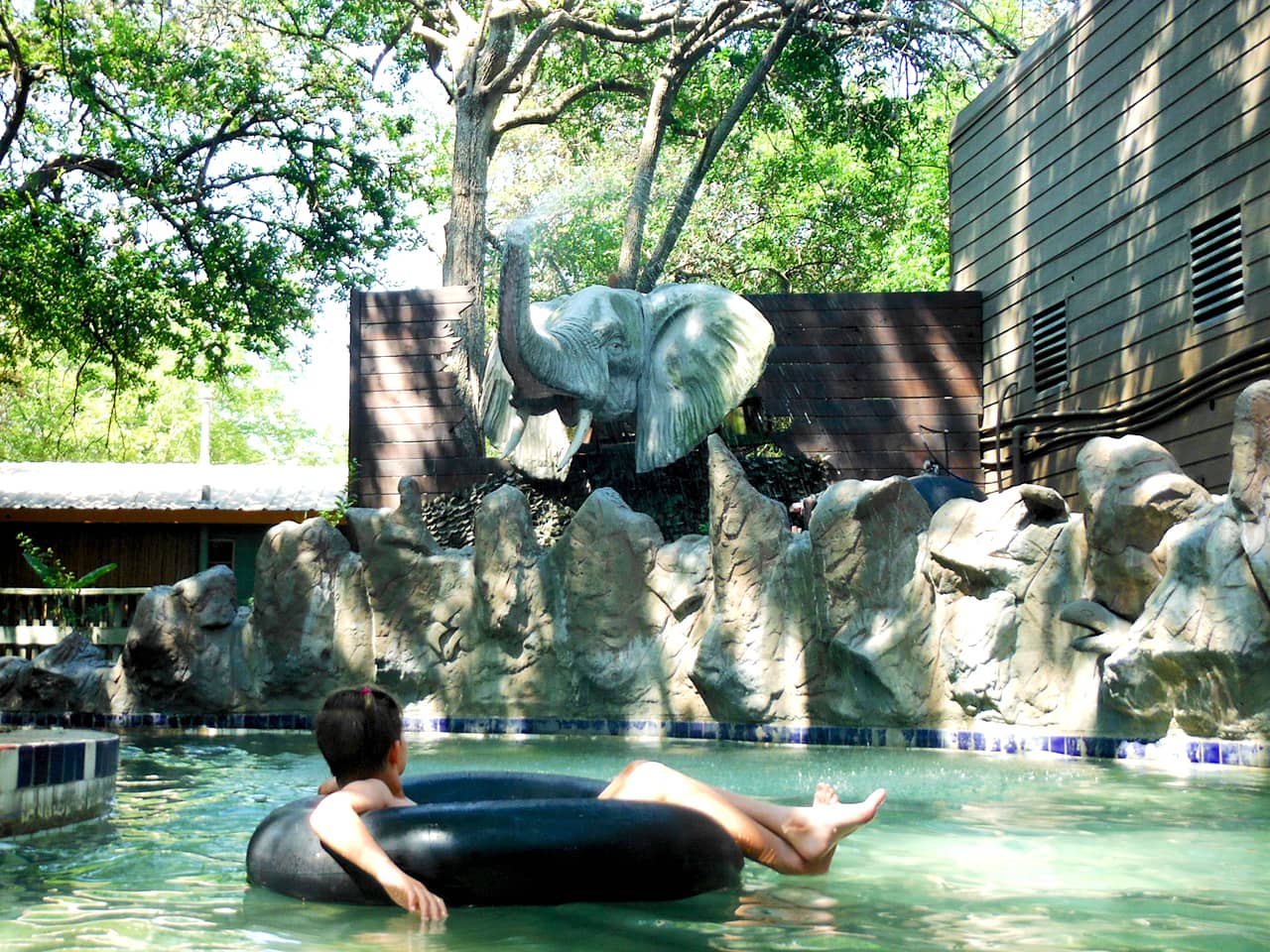
Near Congo River Expedition is the ONLY wave pool in all of Schlitterbahn. An attraction that is typically the centerpiece of virtually every waterpark in the country is more or less an afterthought here. The Beach Wavepool maxes out at 4 feet deep and is probably smaller is size than our community swimming pool. There are other pools and splashpad scattered about both of the park’s properties, but it was very strange to me that there was just a single wave pool and that it was so small compared to ones you find at other waterparks.
Schlitterbahn West also features a few more traditional slides including Bahnzai Pipeline (tube slide), Double Loop, Der Bahn, and Soda Straws (body slides). However, the signature slide attraction in all of Schlitterbahn has to be Downhill Racer, a mat-based slide. The racing slide is located right at the entrance of the West side of Schlitterbahn and starts on top of the park’s ski-lodge-themed gift shop. The concept is not that much different from other racing slides, but the configuration of the hills and the speed generated make for what feels like a death-defying experience with amazing airtime moments. I’ve always enjoyed racing slides, and this one quickly became me new all-time favorite.
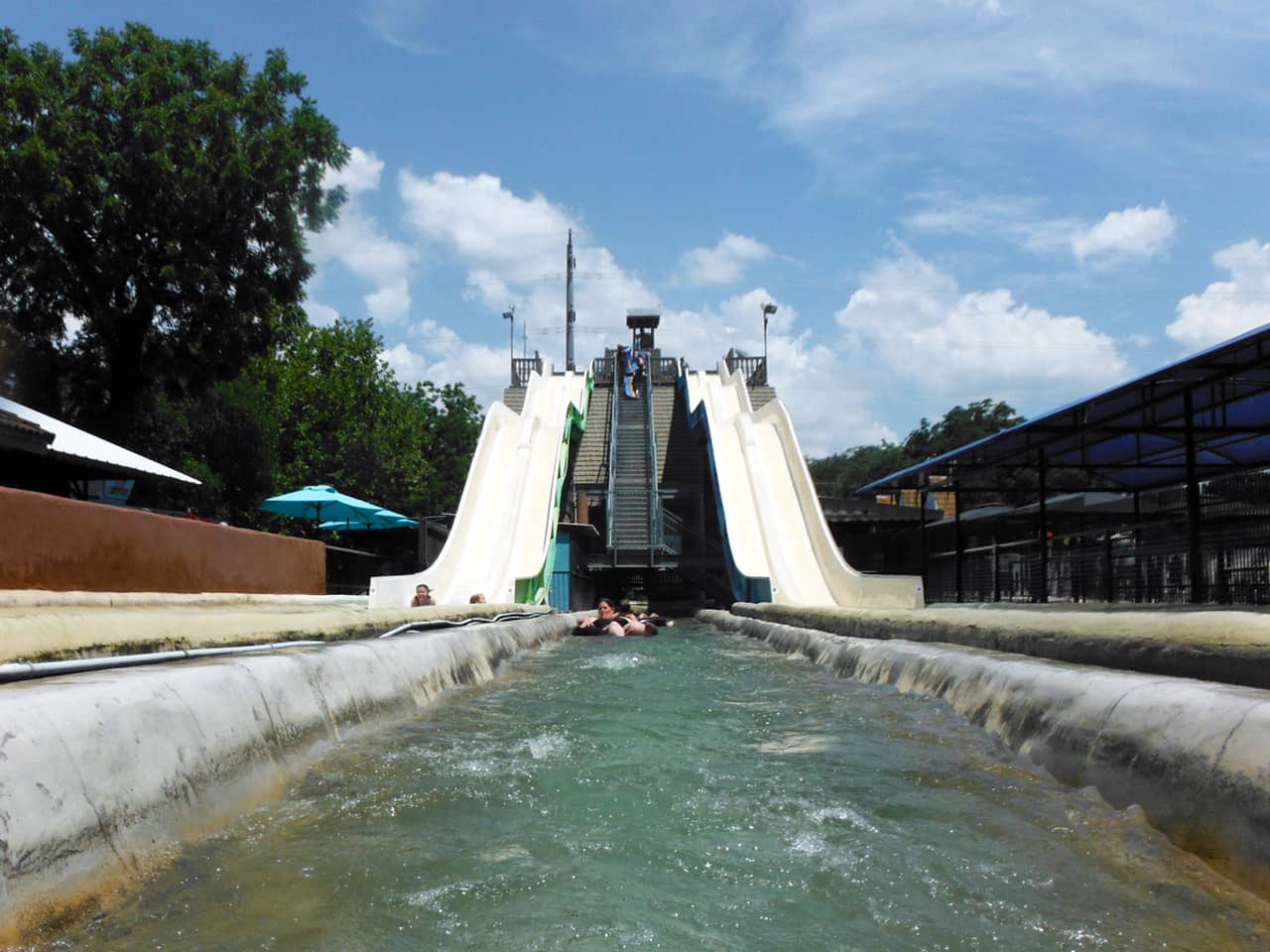
Overall, Schlitterbahn is the most unique waterpark we’ve ever visited. However, I do think there’s a lot of sameness with all of the tube-based slides, compounded by the fact that visitors to New Braunfels can also experience real tubing on the local rivers from one of the dozens of operators in the area. I would say that Volcano Bay offers a better and more complete experience, but Schlitterbahn is definitely better than typical regional waterparks.
With our last planned park days complete, we were expecting to spend the last few days of our time in Texas visiting family in the Dallas area. However, in trying to find some activities to do while traveling back to Dallas from San Antonio, we discovered a small family-owned amusement park in Seguin, only about 30 minutes out of our way back to Dallas. ZDT’s Amusement Park is more of what I would call a “family fun center” where guests can pay for each attraction individually or purchase different types of wristbands that allow for unlimited access. However, what has put ZDT’s on the map is its very unique roller coaster.
Switchback is the world’s only wooden shuttle coaster. Designed by Gravitykraft and opening in 2015, the coaster features Timberliner trains that can accommodate up to eight guests at a time. Even though it is a shuttle coaster, two trains can operate simultaneously – though one train was running during our visit. The trains are extremely comfortable with a single lap bar that pivots across your waist similar to Hollywood Rip Ride Rocket at Universal Studios Florida. It’s possible that some larger guests may find this restraint configuration uncomfortable, but I really like them, and they are very quick and easy for ride operators to check prior to dispatch.
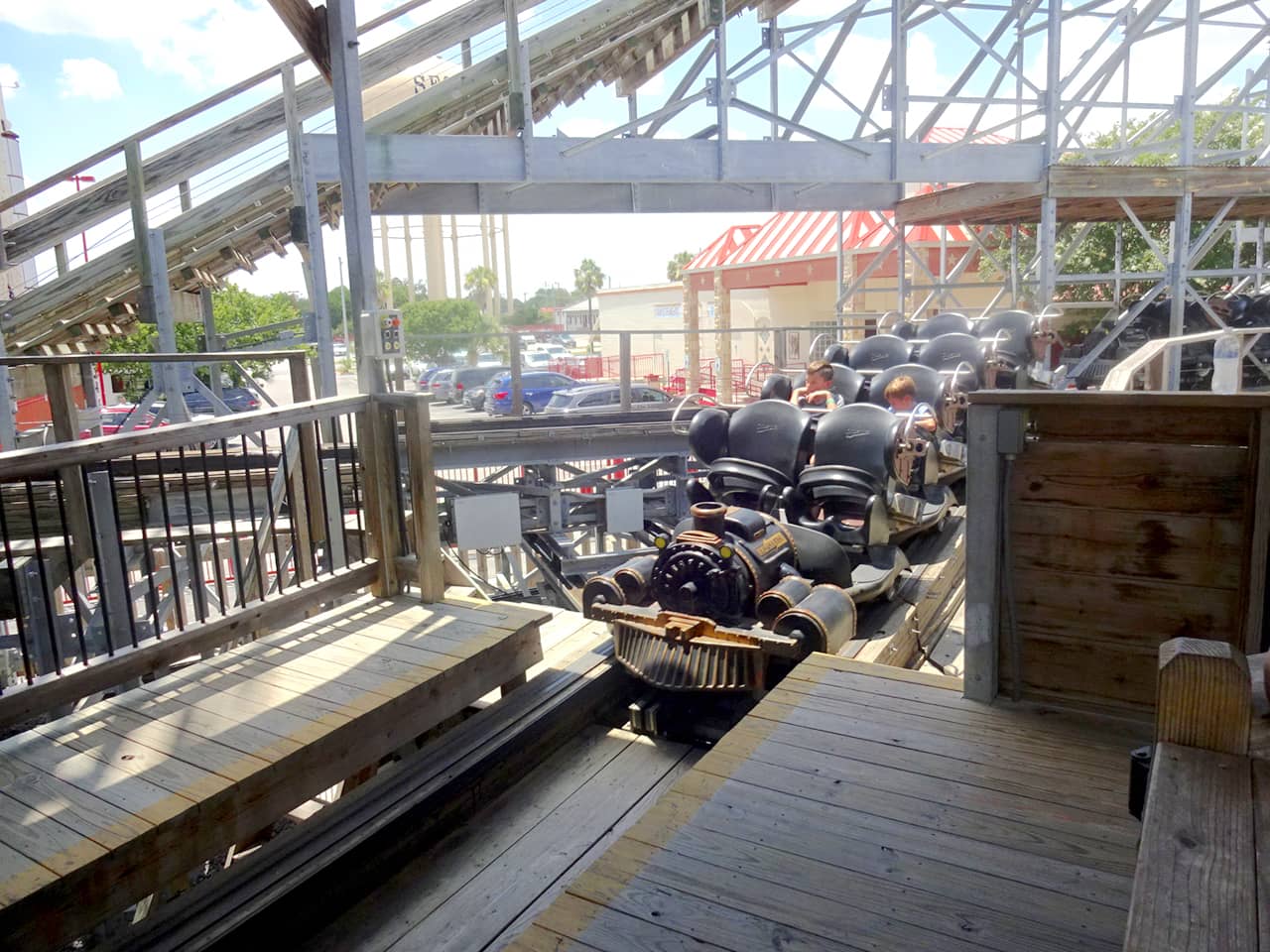
Once secure, the train goes up a 64-foot hill before plunging into the course.
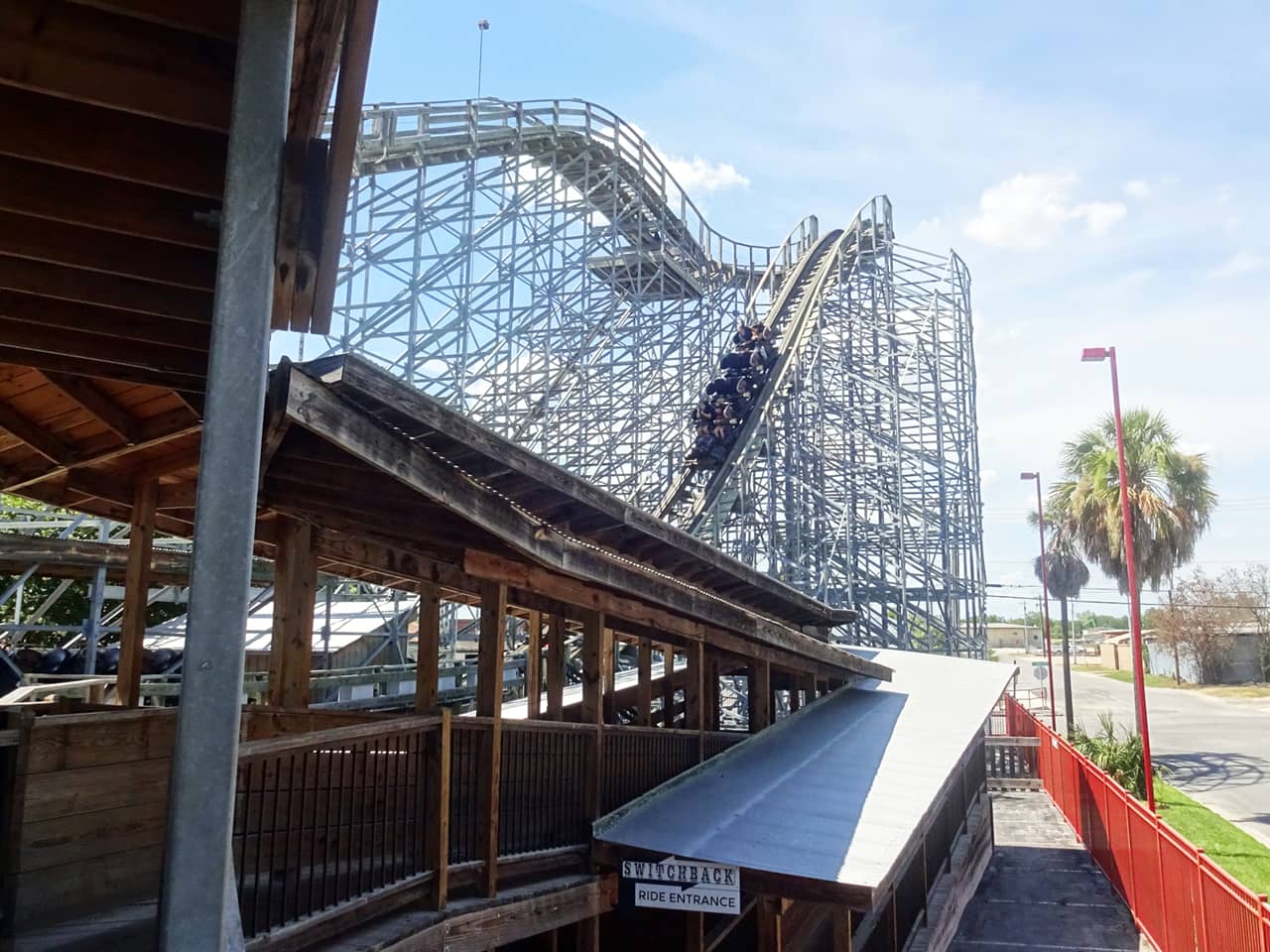
After the first drop the train makes a tight turn and through a building before making a long sweeping left hand turn. Next is what makes Switchback so unique. The train goes up a vertical spike until it stalls, and then traverses the course backwards.
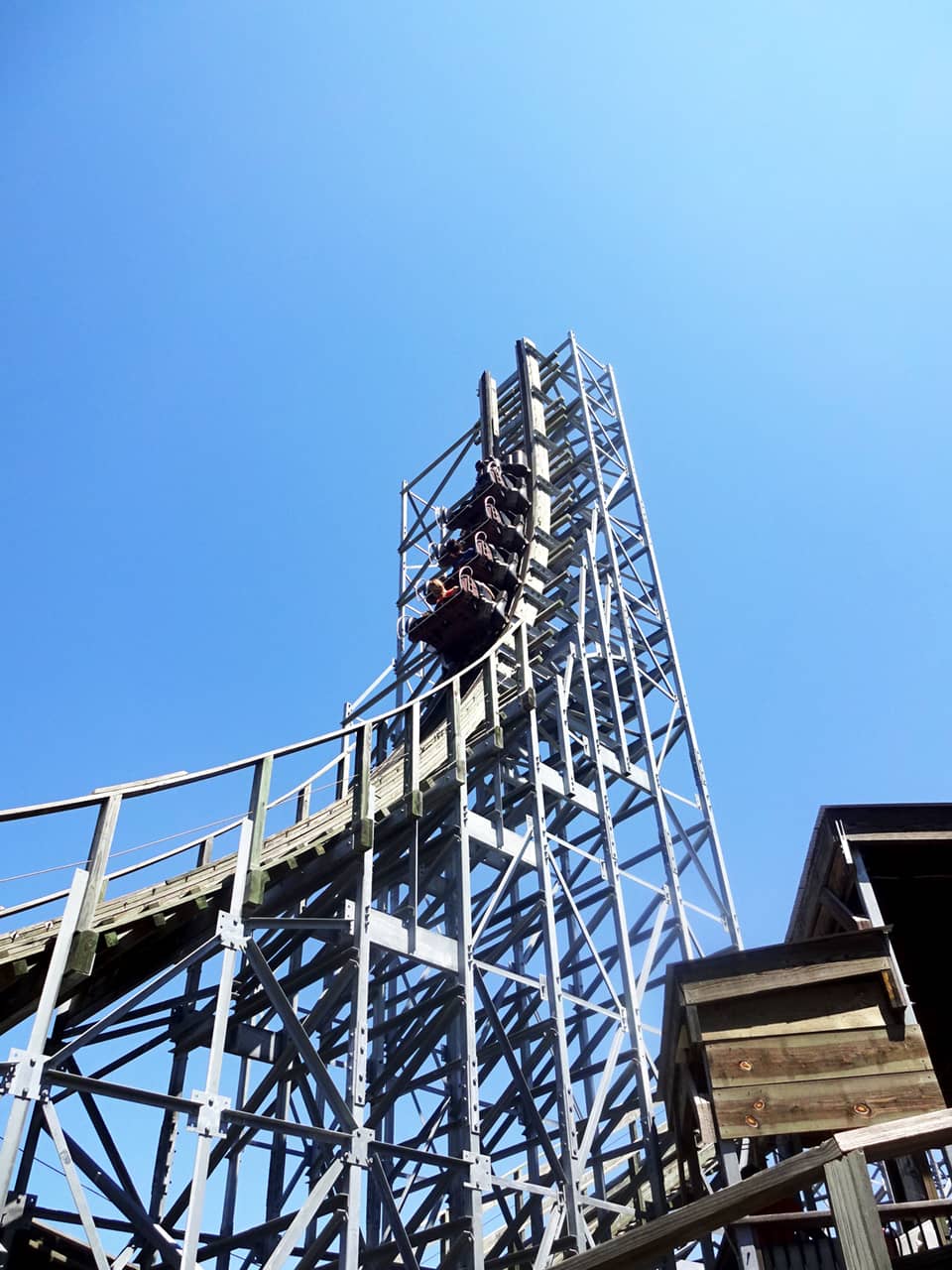
The train has enough momentum to make it halfway up the first hill, but a series of brakes brings the train to a full stop into a transfer track that allows the train to roll back into the station.
Switchback is a truly unique experience, and is a relatively smooth wooden coaster, likely optimized by the comfortable trains. It’s the type of ride you’d expect to see at a big amusement park, not at a tiny family park in remote town in the middle of Texas. The best part about Switchback is that if you purchase a wristband, you can ride the coaster as many times as you want, which on the day we visited meant we could have ridden hundreds of times. We didn’t go quite that crazy (also ride ops mandate guests exit the train and walk around even if there’s no one in line), but we rode over a dozen times and never grew tired of this clever coaster.
While it’s certainly worth the detour to Seguin solely for Switchback, ZDT’s has a bunch of other attractions that were notable. The park operates a 60-foot tall silo climb, which was incredibly challenging, and one of the tallest automated belay climbs in the country.
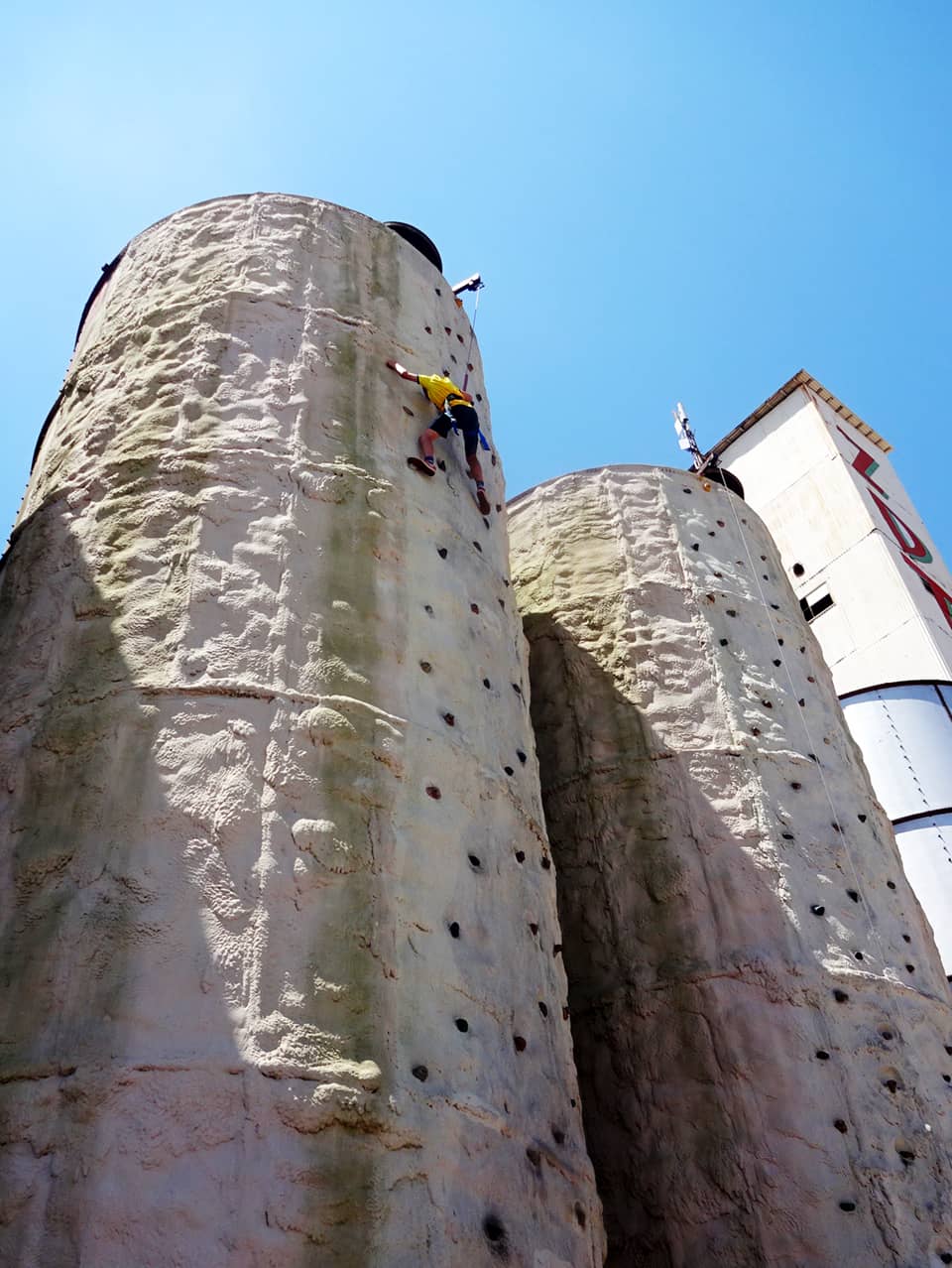
The only drawback is that the blazing sun can make it difficult to keep your grip on the increasingly difficult holds as you approach the top, but Zach successfully made it to the top.
The park also maintains a go-kart track, however instead of exhaust-spewing gasoline engines, these go-karts are fully electric.
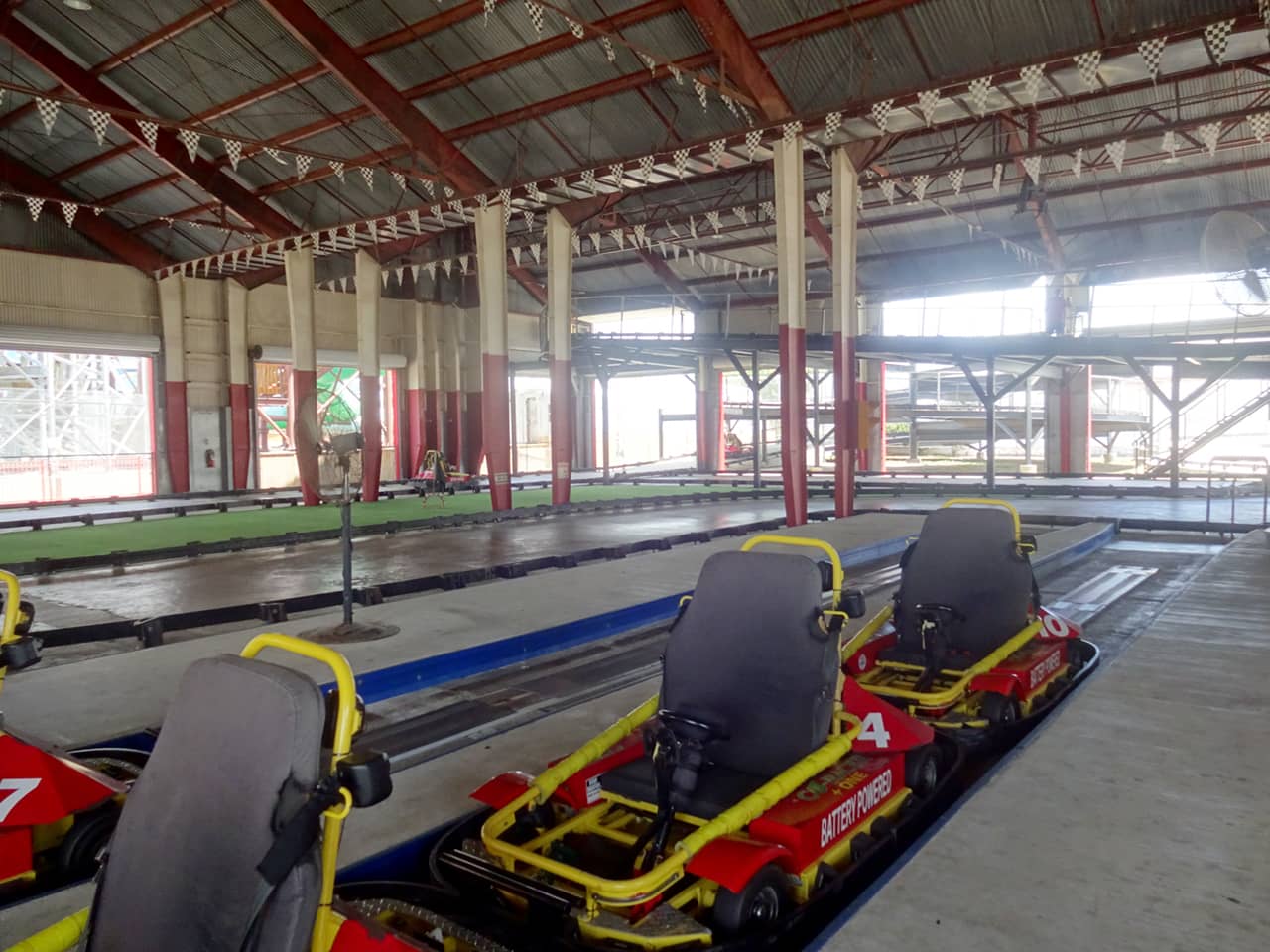
These were a lot of fun and had a bit of strategy involved since each car had a “boost” button that increased your speed slightly that could be deployed about once per lap (kind of like DRS for those F1 fans out there [...or, Push to Pass for our IndyCar fans - Robert]). As with Switchback, if you bought an unlimited wristband, you could ride the go-carts dozens of times, making it quite a value compared to other go-cart complexes.
ZDT’s has two indoor arcades with a wide variety of games, and they also have an expansive play area for the little ones with smaller climbing walls and even a small roller coaster simulator, similar to what you might see at the mall. There’s also a small drop tower, mini spinning pendulum, a couple of water slides, and even a water coaster.
We expected just to take a couple of spins on Switchback and the go-cart track but ended up spending over four hours at ZDT’s. It might not be everyone’s cup of tea, and it is a bit of a detour for those interested in getting the coaster credit, but ZDT’s is worth a visit if you’re traveling in central Texas.
After a few more days in Dallas, including seeing one of the nation’s largest fireworks displays, Kaboomtown, it was time for us to get back to life. It was great to get back to Texas for the first time in a long time, and Zach really enjoyed the opportunity to experience a lot of new rides and attractions. Theme parks are a little more spread out than they are in Florida and California, and the level of theming is not quite to the level of those major destination areas, but Texas has a number of strong parks that hopefully will continue to see investments and improvements to continue making it a worthy destination in the future.
In case you missed them:
* * *
If you would like to publish a trip report on Theme Park Insider, please email editor Robert Niles at themeparkinsider@gmail.com.
For more theme park news, please sign up for Theme Park Insider's weekly newsletter.
And to help support Theme Park Insider while saving money on discounted theme park and attraction tickets, please visit our nationwide Attractions Discounts list.
TweetThis article has been archived and is no longer accepting comments.
great stuff — I never made it out to Schlitterbahn when I lived in Texas and it's amazing what a cultural hold it has in the lone star state.